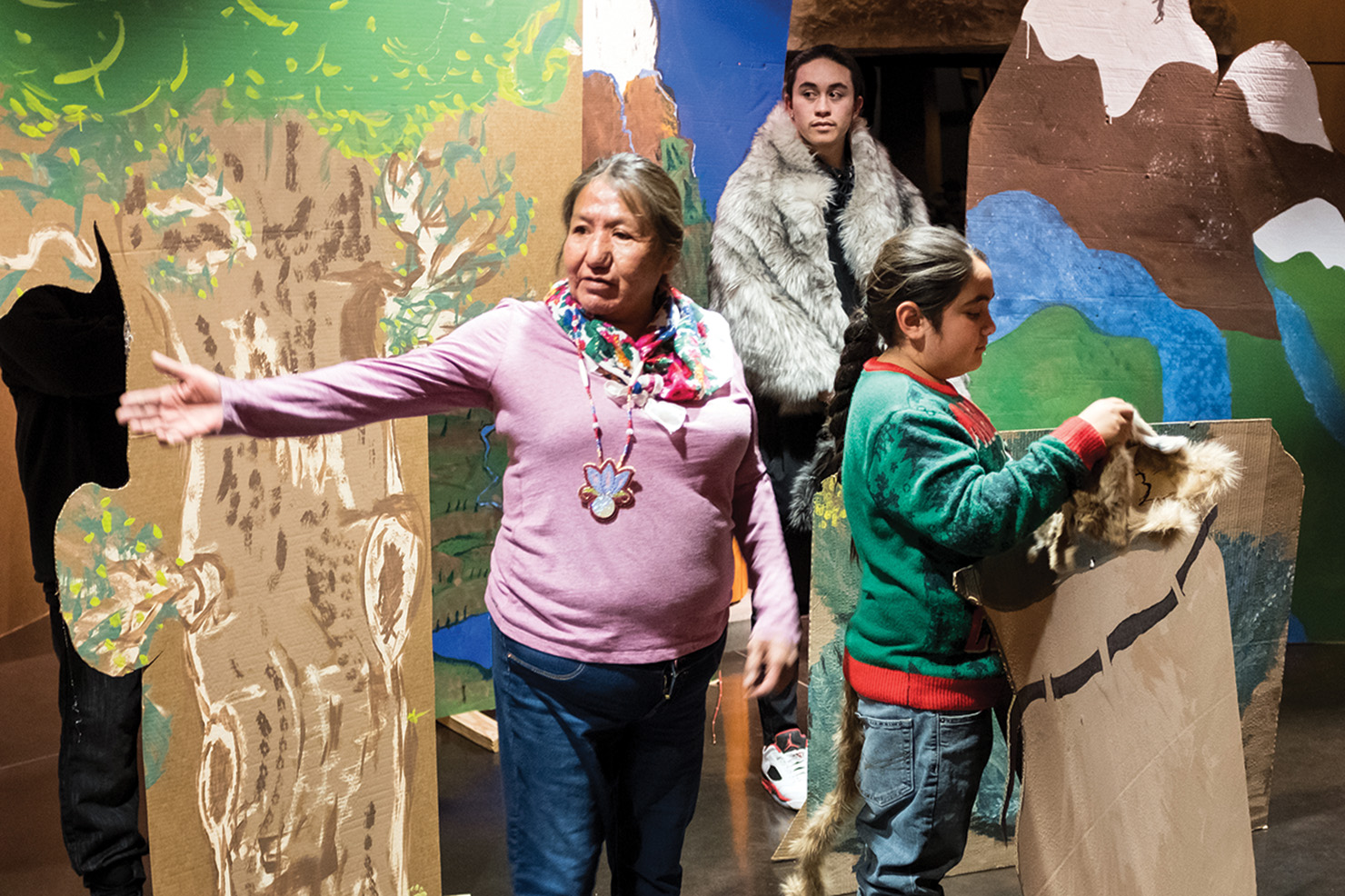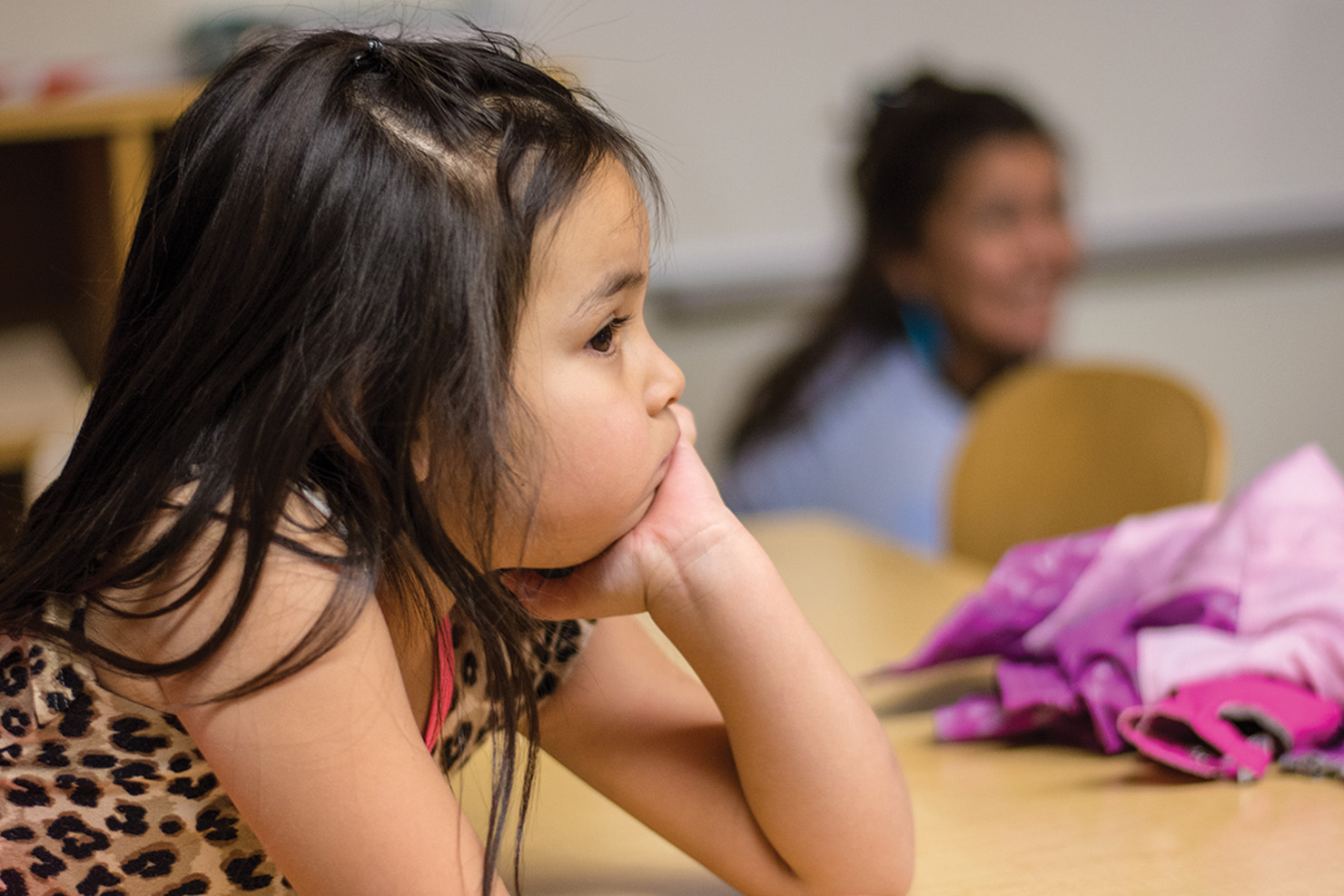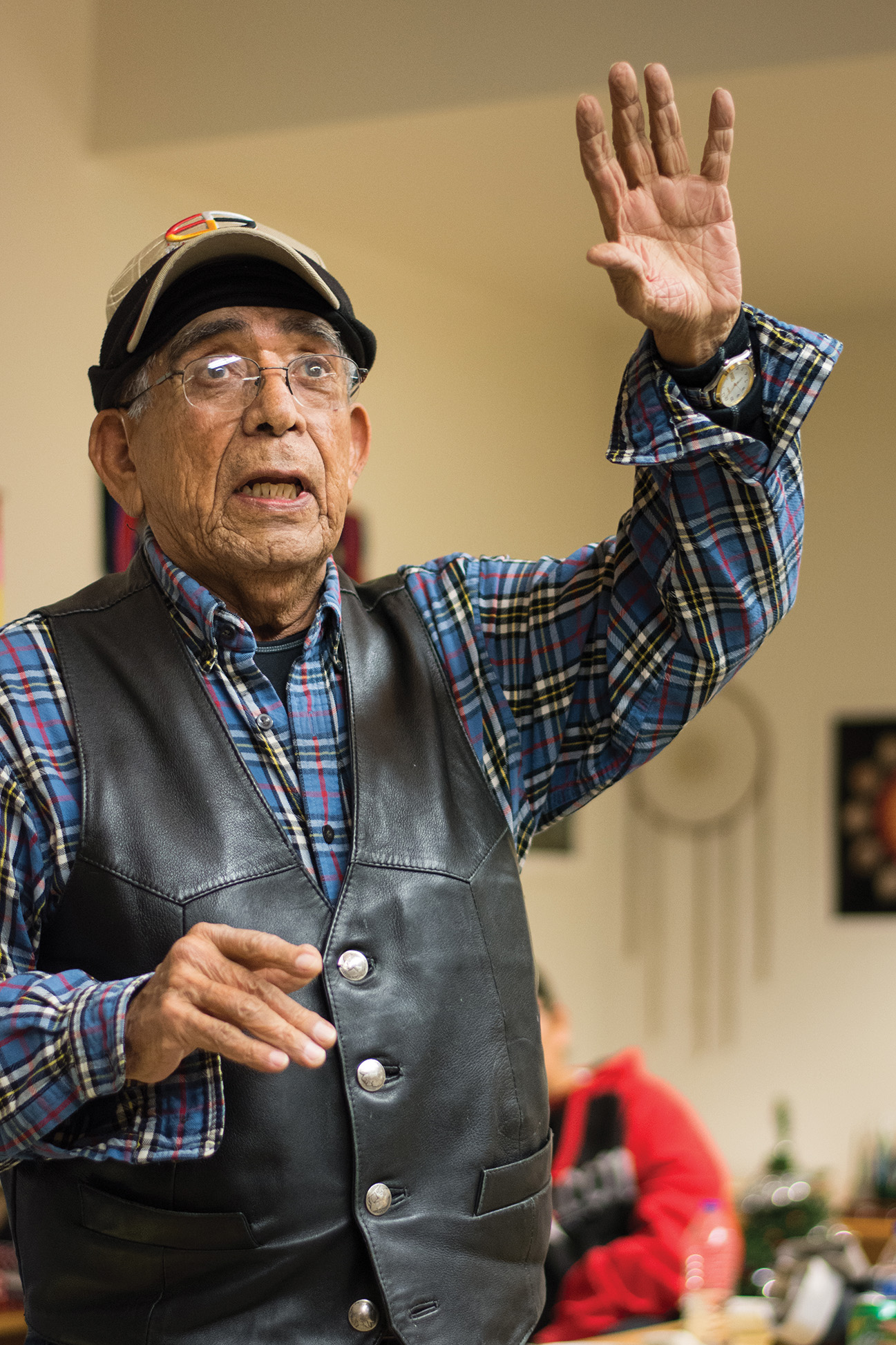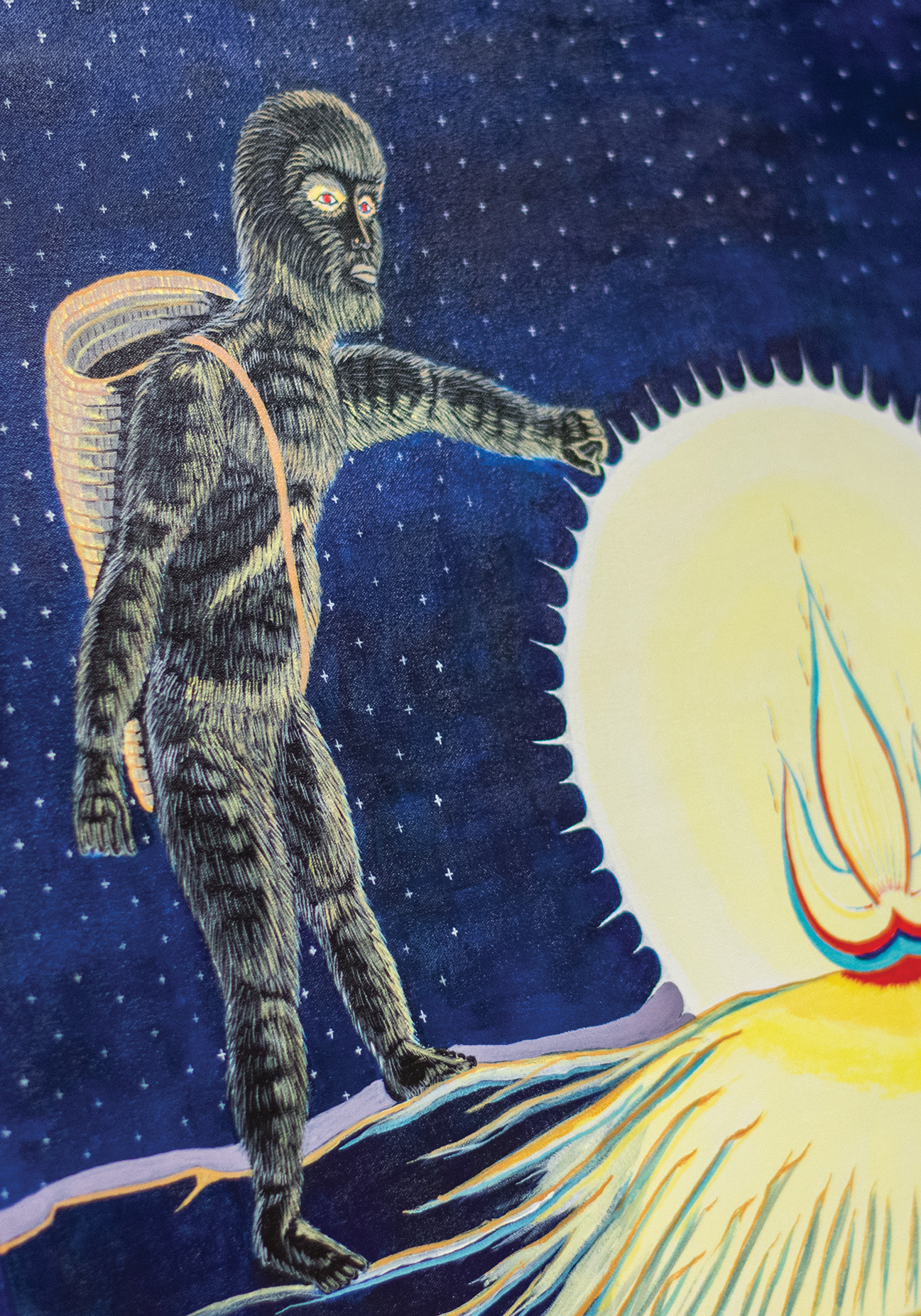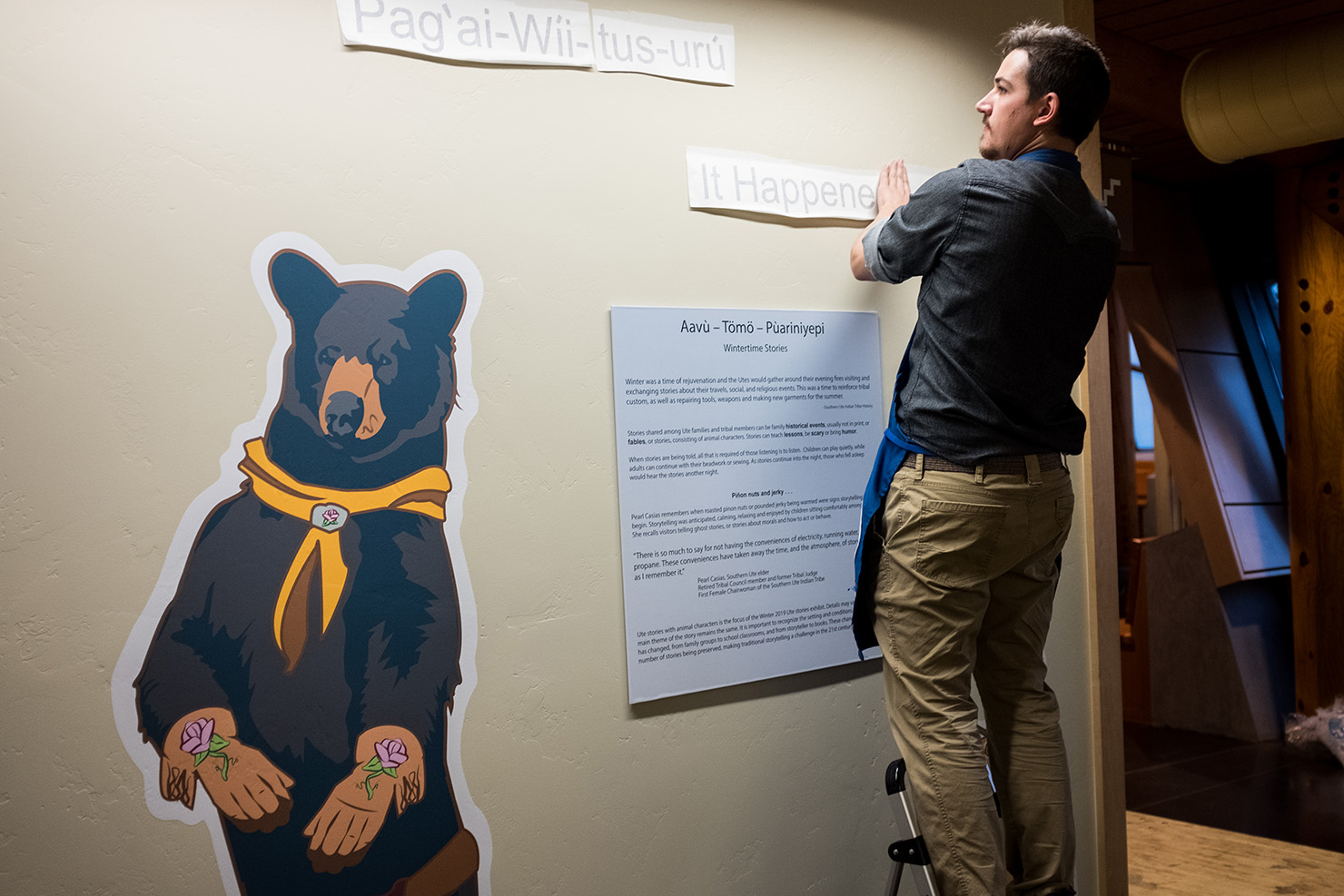Storytelling is an important aspect of Ute culture. These stories are shared and passed down during the winter months, when all the outside activities were slowing down and families were together.
The Southern Ute Indian Montessori Academy (SUIMA) hosted a story night for students and parents in the Ute language classroom on Wednesday, Dec. 19. The following weekend, the Southern Ute Museum (SUM) held a storytelling event as part of their ongoing lecture series, which was open to the public.
Speaking at SUIMA were Southern Ute elders, Pearl Casias and Russell Box Sr., who shared stories with the Ute children over a potluck style dinner. Box, recently penned a memoir, “The Physical and Spiritual Journey of a Southern Ute Elder” with local author Judith Stone. He emphasized the importance that stories have traditionally played in Ute culture.
Box told the story of the “See-atch,” a Sasquatch type character who was known for snatching up children in the dark of night. The story was intended to remind children to listen to their parents and heed the warnings of their elders. Box remembers his parents and grandparents telling fireside stories whenever there was a visitor at their home, the children would sit close and listen, eventually passing these Ute stories on to their children.
Casias told the story of “The Ant and the Grasshopper,” one of the many Ute stories that reflect back on a time where the animals could talk to each other and with people.
The Southern Ute Museum’s storytelling event coincided with the opening of “It All Happened Long Ago,” an exhibit which explores an innovative method of storytelling, while still reinforcing tribal customs, according to the museum’s exhibit statement. In the visual and written exhibit, each animal character encounters moralistic and didactic experiences, each story vividly illustrated by Jed Smith.
Visitors gathered in the great hall of the museum to sip hot coco and listen to stories by Cultural Education Coordinator, Hanley Frost, and Museum Director, Linda Baker on Saturday, Dec 22.
“Wintertime, that’s when the whole family is there, when there is time for grandparents to talk to the children. To teach them beadwork, how to make shawls, ribbon shirts; getting them ready for Bear Dance and other spring ceremonies,” explained Frost.
The evening ended with a live performance of the Ute Creation story, directed by Cassandra Atencio, NAGPRA Coordinator with the Southern Ute Culture Department. Young tribal members donned wolf and coyote attire to play out their skit against a backdrop of hand painted landscapes depicting the Weminuche Wilderness.
Hanley Frost shared the Bear Dance legend, then the story of “Why the Crow is Black,” a family story passed down by his elders. Linda Baker told a tale from her childhood, one that depicted her family traveling around the region and visiting the trading post at Elmore’s Corner. She reinforced the idea that most Ute stories were either oral histories and anecdote passed down through families, or tales of talking animals, each with their own meaning.

